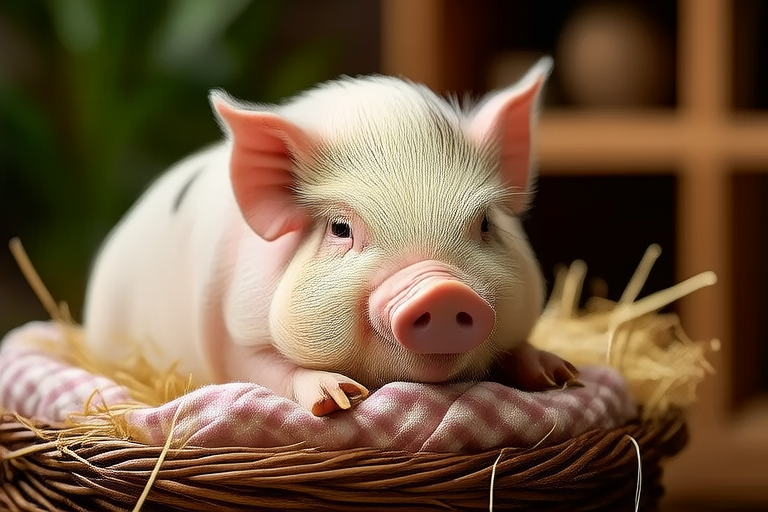DIY Cozy Bedding Ideas for Your Little Guinea Pig Friend
Welcome, fellow pet lovers! If you’re reading this, you likely already know that your little guinea pig friend deserves the best care possible. One essential aspect of their well-being is providing them with a comfortable and cozy bedding environment. Proper bedding isn’t just about making your guinea pig’s living space look nice; it plays a crucial role in their health and happiness. In this article, we’ll explore various DIY bedding ideas that will make your guinea pig feel right at home.
The Importance of Comfortable Bedding for Guinea Pigs
Your guinea pig spends a significant amount of time in its cage, so it’s vital to ensure that they have a comfortable place to rest. A soft and warm bed can help reduce stress, prevent injuries, and promote better sleep, which is crucial for their overall health. Additionally, appropriate bedding can help maintain the cleanliness of your pet’s living space, reducing the risk of infections and illnesses.
Fleece: The Ultimate Soft and Durable Bedding Material
Fleece is an excellent choice for guinea pig bedding due to its softness, durability, and easy maintenance. It’s also highly absorbent, which helps keep your pet dry and comfortable. However, before introducing fleece into your guinea pig’s cage, there are a few important steps to follow:
- Washing: Thoroughly wash the fleece in hot water with mild detergent. Avoid using fabric softeners or dryer sheets, as these can be harmful if ingested.
- Drying: Dry the fleece on high heat to kill any potential bacteria or parasites.
- Trimming: Trim any loose threads or frayed edges to prevent your guinea pig from chewing on them.
Once prepared, you can use the fleece to create cozy nests for your guinea pig. Simply fold the fleece into small squares or rectangles and place them in corners of the cage. You can also add small tunnels or hideouts made from fleece for your guinea pig to explore and hide in.
Towels: A Warm and Familiar Alternative
Towels are another great option for guinea pig bedding, especially for those who prefer a more natural texture. They provide warmth and comfort, and many guinea pigs enjoy the familiar scent of the material. To prepare towels for your pet:
- Washing: Wash the towels in hot water with mild detergent, just like you would with fleece.
- Drying: Dry them thoroughly on high heat to eliminate any potential contaminants.
- Cutting: Cut the towels into smaller pieces to prevent your guinea pig from swallowing large sections.
Arrange the cut towels in layers within the cage, ensuring that there are no sharp edges or loose strings that could cause injury. You can also roll up some towels to create a nest or burrow for your guinea pig to snuggle in.
Shredded Paper: An Eco-Friendly Option
Shredded paper is an eco-friendly alternative that’s both cost-effective and readily available. It provides good insulation and is easy to replace, making it ideal for busy pet owners. However, not all types of paper are suitable for your guinea pig. Avoid glossy or colored papers, as they may contain harmful chemicals. Instead, opt for plain, uncoated paper like newspaper or computer paper.
- Shredding: Use a paper shredder to create thin strips of paper. This reduces the risk of your guinea pig choking on larger pieces.
- Disinfecting: Disinfect the shredded paper by soaking it in a solution of one part bleach to ten parts water. Rinse thoroughly and let it air dry completely before placing it in the cage.
Spread the shredded paper evenly across the bottom of the cage, ensuring that it covers the entire surface area. You can also create small piles or mounds for your guinea pig to dig into and explore.
Creating Cozy Nests
No matter which material you choose, creating a cozy nest for your guinea pig is a fun and rewarding project. Here’s a simple guide to help you get started:
- Select the Right Size: Guinea pigs need enough space to stretch out comfortably, but not so much that they feel exposed or vulnerable. A nest that’s approximately twice the length of your guinea pig is ideal.
- Choose the Shape: Round or oval shapes work best for guinea pigs, as they provide a sense of security and mimic natural burrows.
- Placement: Position the nest in a quiet corner of the cage, away from any direct drafts or bright lights. This will help your guinea pig feel safe and secure.
- Add Soft Toppings: Top your nest with additional layers of fleece, towels, or shredded paper for extra comfort. You can also add small toys or tunnels to make the nest even more inviting.
Maintaining Hygiene and Safety
While creating a cozy bedding environment is important, it’s equally crucial to maintain proper hygiene and safety. Regular cleaning is essential to prevent the buildup of bacteria and odors. Remove soiled bedding daily and replace it with fresh material. Deep clean the entire cage once a week, washing all surfaces and replacing all bedding.
To ensure the bedding remains inviting and safe, monitor your guinea pig’s behavior and adjust the bedding as needed. If your guinea pig shows signs of discomfort or distress, consider changing the type or arrangement of the bedding. Additionally, avoid using any materials that could be harmful if ingested, such as plastic, Styrofoam, or synthetic fibers.
Conclusion
Caring for your guinea pig goes beyond just feeding and playing with them; it also involves creating a comfortable and safe living environment. By choosing the right bedding materials and following our DIY tips, you can ensure that your guinea pig has a cozy and inviting space to call home. Remember, your creativity and attention to detail can make a big difference in your pet’s quality of life. Happy crafting!
